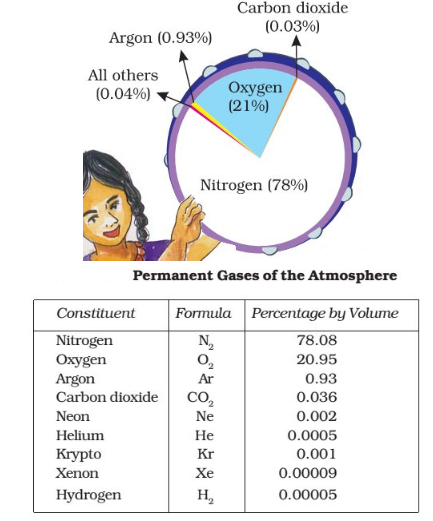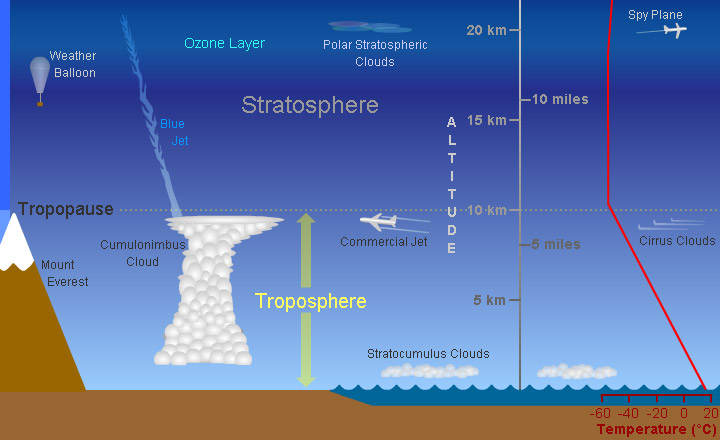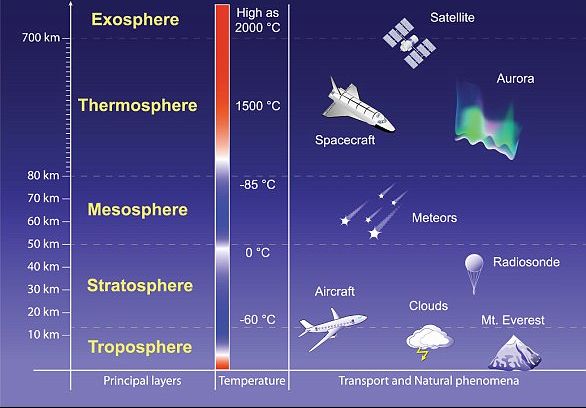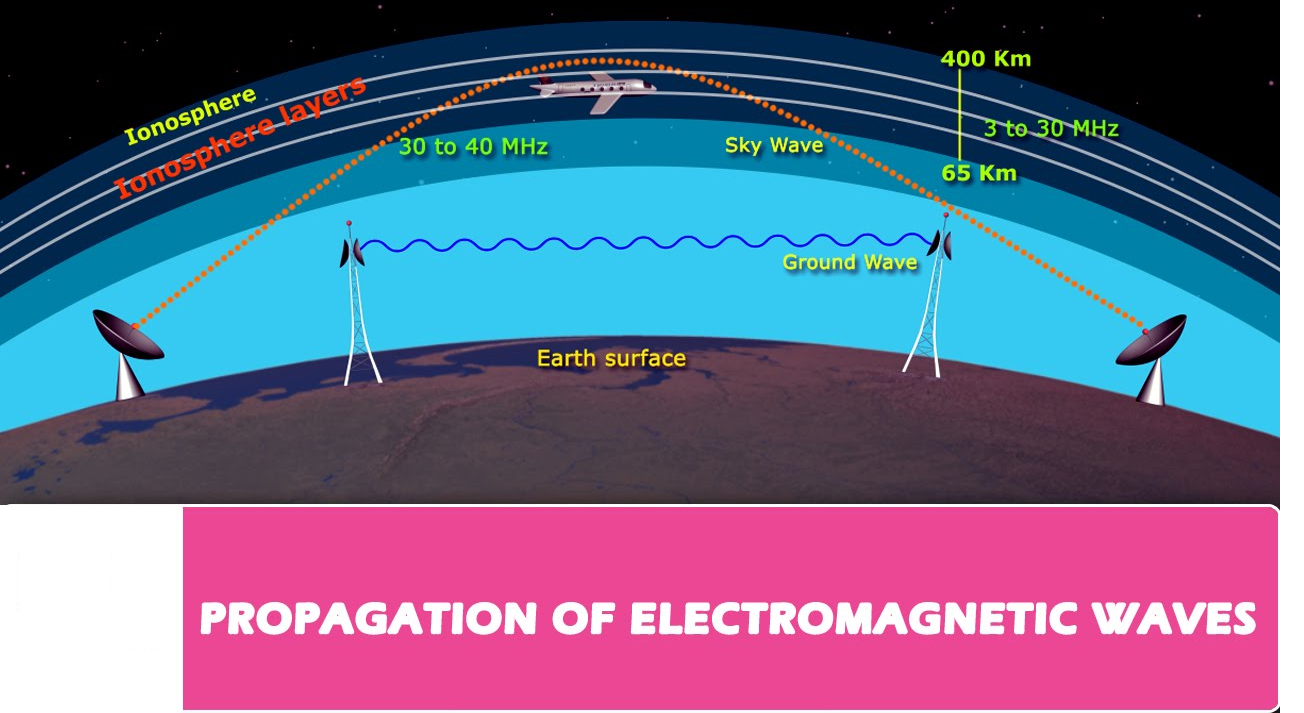Static Quiz 13 February 2023
Quiz-summary
0 of 5 questions completed
Questions:
- 1
- 2
- 3
- 4
- 5
Information
Static Quiz 13 February 2023 for UPSC Prelims
You have already completed the quiz before. Hence you can not start it again.
Quiz is loading...
You must sign in or sign up to start the quiz.
You have to finish following quiz, to start this quiz:
Results
0 of 5 questions answered correctly
Your time:
Time has elapsed
You have reached 0 of 0 points, (0)
Categories
- Not categorized 0%
- 1
- 2
- 3
- 4
- 5
- Answered
- Review
- Question 1 of 5
1. Question
Which of the following statements are correct about the earth’s atmosphere?
1. The atmosphere layer closest to the earth is referred to as the troposphere.
2. Our planet earth is enveloped by a deep blanket of gases extending several thousands of kilometres above its surface.
3. In the absence of the atmosphere extremes of temperature would exist between day and night over the earth’s surface.CorrectAns;- d) All of the above
Explanation;-
• All the statements are correct.
About Earth’s Atmosphere
• Earth’s atmosphere is composed of about 78 percent nitrogen, 21 percent oxygen, 0.9 percent argon, and 0.1 percent other gases. Trace amounts of carbon dioxide, methane, water vapor, and neon are some of the other gases that make up the remaining 0.1 percent.
• The atmosphere protects living things from the Sun’s most harmful rays. Gases reflect or absorb the strongest rays of sunlight .
• The atmosphere shields Earth from the most harmful solar rays.Role of Earth’s Atmosphere
• The atmosphere contains various gases like oxygen, carbon dioxide, nitrogen etc.
• Plants require carbon dioxide to survive while animals and many other organisms need oxygen for their survival.
• The atmosphere supplies these life giving gases.
• All life forms need a particular range of temperature and a specific range of frequencies of solar radiation to carry out their biophysical processes.
• The atmosphere absorbs certain frequencies and lets through some other frequencies of solar radiation. In other words, the atmosphere regulates the entry of solar radiation.
• The atmosphere also keeps the temperature over the earth’s surface within certain limits. In the absence of the atmosphere extremes of temperature would exist between day and night over the earth’s surface.
• Harmful ultraviolet radiation would find its way through, if the atmosphere (ozone in stratosphere to be specific) were absent.
• The atmosphere also takes care of extra-terrestrial objects like meteors which get burnt up while passing through the atmosphere (mesosphere to be precise) due to friction.
• Weather is another important phenomenon which dictates the direction of a number of natural and man-made processes like plant growth, agriculture, soil-formation, human settlements, etc. Various climatic factors join together to create weather.IncorrectAns;- d) All of the above
Explanation;-
• All the statements are correct.
About Earth’s Atmosphere
• Earth’s atmosphere is composed of about 78 percent nitrogen, 21 percent oxygen, 0.9 percent argon, and 0.1 percent other gases. Trace amounts of carbon dioxide, methane, water vapor, and neon are some of the other gases that make up the remaining 0.1 percent.
• The atmosphere protects living things from the Sun’s most harmful rays. Gases reflect or absorb the strongest rays of sunlight .
• The atmosphere shields Earth from the most harmful solar rays.Role of Earth’s Atmosphere
• The atmosphere contains various gases like oxygen, carbon dioxide, nitrogen etc.
• Plants require carbon dioxide to survive while animals and many other organisms need oxygen for their survival.
• The atmosphere supplies these life giving gases.
• All life forms need a particular range of temperature and a specific range of frequencies of solar radiation to carry out their biophysical processes.
• The atmosphere absorbs certain frequencies and lets through some other frequencies of solar radiation. In other words, the atmosphere regulates the entry of solar radiation.
• The atmosphere also keeps the temperature over the earth’s surface within certain limits. In the absence of the atmosphere extremes of temperature would exist between day and night over the earth’s surface.
• Harmful ultraviolet radiation would find its way through, if the atmosphere (ozone in stratosphere to be specific) were absent.
• The atmosphere also takes care of extra-terrestrial objects like meteors which get burnt up while passing through the atmosphere (mesosphere to be precise) due to friction.
• Weather is another important phenomenon which dictates the direction of a number of natural and man-made processes like plant growth, agriculture, soil-formation, human settlements, etc. Various climatic factors join together to create weather. - Question 2 of 5
2. Question
Which of the following statements about Composition of Atmosphere are correct?
1. The earth atmosphere it contains huge numbers of solid and liquid particles, collectively called ‘aerosols’.
2. The proportion of gases changes in the higher layers of the atmosphere in such a way that oxygen will be almost in negligible quantity
3. Some of the gases may be regarded as permanent atmospheric components which remain in fixed proportion to the total gas volume.CorrectAns;- d) All of the above
Explanation;-
• All the statements are correct
About Composition of Atmosphere
• The atmosphere is a mixture of many gases. In addition, it contains huge numbers of solid and liquid particles, collectively called ‘aerosols’.
• Some of the gases may be regarded as permanent atmospheric components which remain in fixed proportion to the total gas volume.
• Other constituents vary in quantity from place to place and from time to time. If the suspended particles, water vapour and other variable gases were excluded from the atmosphere, then the dry air is very stable all over the earth up to an altitude of about 80 kilometres.
• The proportion of gases changes in the higher layers of the atmosphere in such a way that oxygen will be almost in negligible quantity at the height of 120 km. Similarly, carbon dioxide and water vapour are found only up to 90 km from the surface of the earth.
• Nitrogen and oxygen make up nearly 99% of the clean, dry air. The remaining gases are mostly inert and constitute about 1% of the atmosphere.
• Besides these gases, large quantities of water vapour and dust particles are also present in the atmosphere. These solid and liquid particles are of great climatic significance. Incorrect
IncorrectAns;- d) All of the above
Explanation;-
• All the statements are correct
About Composition of Atmosphere
• The atmosphere is a mixture of many gases. In addition, it contains huge numbers of solid and liquid particles, collectively called ‘aerosols’.
• Some of the gases may be regarded as permanent atmospheric components which remain in fixed proportion to the total gas volume.
• Other constituents vary in quantity from place to place and from time to time. If the suspended particles, water vapour and other variable gases were excluded from the atmosphere, then the dry air is very stable all over the earth up to an altitude of about 80 kilometres.
• The proportion of gases changes in the higher layers of the atmosphere in such a way that oxygen will be almost in negligible quantity at the height of 120 km. Similarly, carbon dioxide and water vapour are found only up to 90 km from the surface of the earth.
• Nitrogen and oxygen make up nearly 99% of the clean, dry air. The remaining gases are mostly inert and constitute about 1% of the atmosphere.
• Besides these gases, large quantities of water vapour and dust particles are also present in the atmosphere. These solid and liquid particles are of great climatic significance.
- Question 3 of 5
3. Question
Which of the following statements about Troposphere are correct?
1. It is the atmospheric layer between the earth’s surface and an altitude of 8 km at the equator and 18 km at the poles.
2. The troposphere ends with the Tropopause.
3. The troposphere is marked by temperature inversion, turbulence and eddies.CorrectAns;- b) Only 2 and 3
Explanation;-
• The 1st statemnet is incorrect because at poles is 8km and 18km at the Equator
About Troposphere
• It is the atmospheric layer between the earth’s surface and an altitude of 8 km at the poles and 18 km at the equator.
• The thickness is greater at the equator, because the heated air rises to greater heights.
• The troposphere ends with the Tropopause.
• The temperature in this layer, as one goes upwards, falls at the rate of 5°C per kilometer, and reaches -45°C at the poles and -80°C over the equator at Tropopause (greater fall in temperature above equator is because of the greater thickness of troposphere – 18 km).
• The fall in temperature is called ‘lapse rate’.
• The troposphere is marked by temperature inversion, turbulence and eddies.
• It is also meteorologically the most significant zone in the entire atmosphere (Almost all the weather phenomena like rainfall, fog and hailstorm etc. are confined to this layer).
• It is also called the convective region, since all convection stops at Tropopause.
• The troposphere is the theatre for weather because all cyclones, anticyclones, storms and precipitation occur here, as all water vapors and solid particles lie within this.
• The troposphere is influenced by seasons and jet streams. Incorrect
IncorrectAns;- b) Only 2 and 3
Explanation;-
• The 1st statemnet is incorrect because at poles is 8km and 18km at the Equator
About Troposphere
• It is the atmospheric layer between the earth’s surface and an altitude of 8 km at the poles and 18 km at the equator.
• The thickness is greater at the equator, because the heated air rises to greater heights.
• The troposphere ends with the Tropopause.
• The temperature in this layer, as one goes upwards, falls at the rate of 5°C per kilometer, and reaches -45°C at the poles and -80°C over the equator at Tropopause (greater fall in temperature above equator is because of the greater thickness of troposphere – 18 km).
• The fall in temperature is called ‘lapse rate’.
• The troposphere is marked by temperature inversion, turbulence and eddies.
• It is also meteorologically the most significant zone in the entire atmosphere (Almost all the weather phenomena like rainfall, fog and hailstorm etc. are confined to this layer).
• It is also called the convective region, since all convection stops at Tropopause.
• The troposphere is the theatre for weather because all cyclones, anticyclones, storms and precipitation occur here, as all water vapors and solid particles lie within this.
• The troposphere is influenced by seasons and jet streams.
- Question 4 of 5
4. Question
Which of the following statemnets about Stratosphere are correct?
1. It lies beyond troposphere, up to an altitude of 50 km from the earth’s surface.
2. This layer is almost free from clouds and associated weather phenomenon, making conditions most ideal for flying aero planes.CorrectAns;- c) Both 1 and 2
Explanation;-
• Both the statements are correct about Stratosphere
About Stratosphere
• The stratosphere is the second major layer of Earth’s atmosphere, just above the troposphere, and below the mesosphere.
• It lies beyond troposphere, up to an altitude of 50 km from the earth’s surface.
• The temperature in this layer remains constant for some distance but then rises to reach a level of 0°C at 50 km altitude.
• This rise is due to the presence of ozone (harmful ultraviolet radiation is absorbed by ozone).
• This layer is almost free from clouds and associated weather phenomenon, making conditions most ideal for flying aero planes.
• So aeroplanes fly in lower stratosphere, sometimes in upper troposphere where weather is calm.
• Sometimes, cirrus clouds are present at lower levels in this layer. Incorrect
IncorrectAns;- c) Both 1 and 2
Explanation;-
• Both the statements are correct about Stratosphere
About Stratosphere
• The stratosphere is the second major layer of Earth’s atmosphere, just above the troposphere, and below the mesosphere.
• It lies beyond troposphere, up to an altitude of 50 km from the earth’s surface.
• The temperature in this layer remains constant for some distance but then rises to reach a level of 0°C at 50 km altitude.
• This rise is due to the presence of ozone (harmful ultraviolet radiation is absorbed by ozone).
• This layer is almost free from clouds and associated weather phenomenon, making conditions most ideal for flying aero planes.
• So aeroplanes fly in lower stratosphere, sometimes in upper troposphere where weather is calm.
• Sometimes, cirrus clouds are present at lower levels in this layer.
- Question 5 of 5
5. Question
Atmospheric layer which reflects radio waves are called?
CorrectAns;- b) Ionosphere
Explanation;-
• The layer of the atmosphere that reflects radio waves is the ionosphere.
• That is because there are gas particles in the ionosphere that are ionized, or that carry an electrical charge.
• The ionosphere is a layer which includes the thermosphere and part of the mesosphere and exosphere. Incorrect
IncorrectAns;- b) Ionosphere
Explanation;-
• The layer of the atmosphere that reflects radio waves is the ionosphere.
• That is because there are gas particles in the ionosphere that are ionized, or that carry an electrical charge.
• The ionosphere is a layer which includes the thermosphere and part of the mesosphere and exosphere.







